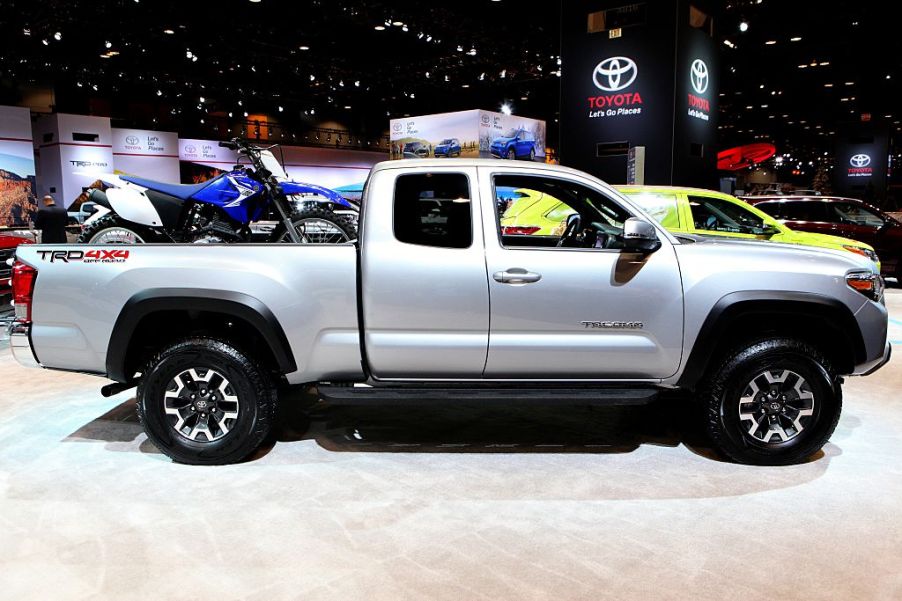
Why Toyota Would Love to Get a Redo on the 2016 Tacoma
When vehicles are redesigned, some changes are an improvement and others are not. Buyers hope for a dependable vehicle, especially during the first year of ownership. The third-generation Toyota Tacoma came out in 2016, and it turned out not to be an improvement over the second generation of the year before. It had so many transmission problems that Toyota probably wished it could get a redo on it.
2016 Tacoma problems
People who own or have owned a 2016 Tacoma experienced a number of issues that they submitted to CarComplaints.com. Common issues included 43 transmission problems, 31 engine problems, 20 body/paint problems, and 18 drivetrain problems.
After the 2016 redesign, a lot of the problems were with the new 3.5-liter V-6 engine with six-speed automatic transmission. The 2016 Tacoma had the most overall complaints of any year since 2006, when the second-generation Tacoma was introduced.
2016 Tacoma owners dealt with transmissions that hunted for gears, delayed engagement when shifting to drive or reverse, slipped, or lurched. The largest number of those transmission problems were for delayed or harsh shifts and for delayed engagement of “drive” when cold. A lot of people experiencing engine problems mentioned vibrations in the floor and steering wheel and also excessive engine noise.
Owners indicated an average of fewer than 8,000 miles on the truck when they logged their transmission concerns. Issues like lurching when the transmission engaged appeared as early as 1,400 average miles.
On average, people drive 13,476 miles each year, according to the U.S. Department of Transportation Federal Highway Administration (FHWA). This means owners were dealing with problems that appeared well before the end of their first year owning the truck.
The fixes
To resolve the issues, Toyota issued several technical service bulletins (TSB) and four recalls. Two important TSB fixes were both software re-flashes to the Engine Control Module (ECM) and did not involve repairs to the actual transmission. Some owners reported their Tacomas had a much better feel and function after having these fixes completed.
There have also been four recalls issued. Two major recalls were for leaky differentials and for too much anti-corrosion coating on the crankshaft timing rotor, which could cause the crankshaft position sensor to malfunction.
Two minor recalls involve the accessory hood scoop and the driver’s knee airbag module bolts. In 2019, the NHTSA’s Office of Defects Investigations (ODI) started investigating a possible defect with the air bag ACU. No recall has been issued so far for this.
More recent model years
The TSB software updates and the recalls seem to have repaired the issues. CarComplaints.com registered fewer issues in the years since then, with 63 for the 2017 model year, nine for 2018, and 11 for 2019.
While the 2017 model had fewer complaints, it still registered 23 transmission problems submitted to CarComplaints.com. By the 2018 model year, the number of transmission issues had dropped to two.
As a brand, Toyota ranked highly for dependability in 2019, coming in third (behind Lexus and Porsche) in the J.D. Power 2019 U.S. Vehicle Dependability Study.
The Toyota Tacoma hasn’t been on the J.D. Power U.S. Dependability Survey since 2015, when it was highest ranked. Its transmission issues have affected its dependability, even though those issues have since been corrected.
The Nissan Frontier is currently the highest-ranked midsize pickup, and it has been since 2016. Since J.D. Power’s dependability ratings look at three-year-old vehicles, look for a possible return of the Toyota Tacoma on the 2021 list.


